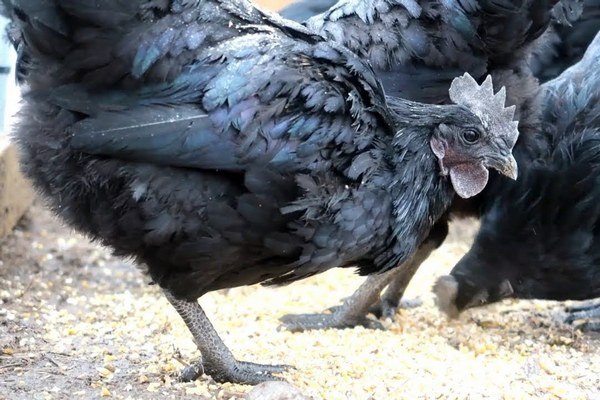
The Ayam Cemani is an uncommon breed of chicken from Indonesia. They have a dominant gene that causes hyperpigmentation, making the chicken mostly black, including feathers, beak, and internal organs.
The Ayam Cemani has certainly had people talking excitedly about it over the last few years. It is a totally black bird – inside and out, so as you can imagine it has been associated with the Dark Arts especially in its’ own country of Indonesia. At the current time they remain a pretty rare bird and are very hard to obtain. In this article we are going to take a close look at these interesting and unusual birds and help you figure out if you need them in your flock!
The Ayam Cemani is often associated with a group of breeds known as Kedu, from the central plains of Java. It is believed to be an offshoot of the Ayam Bekisar chicken which lives on a small group of islands in Indonesia.
The Ayam Bekisar originated from matching the green jungle fowl with some domesticated red jungle fowl. This was a tricky process as certain crosses will be infertile.
Interestingly, this group of fowl has a very distinct crow, and was used by seafarers as foghorns on the boats – a practice still used today.
Even the name has confused meanings: Ayam means chicken in the Indonesian language, but the name Cemani can either mean the ‘village of Cemani’ in local dialect or ‘solid black’ in Sanskrit, you can take your pick.
It is said by some folks to be a landrace bird, but there is evidence that it was a developed breed at some point. It is not a chicken of the ‘common’ people. People of wealth and community standing have these birds as status symbols and take great care of them.
They are thought of as good luck charms, with the blood and other parts of the bird being used in traditional medicine preparations.
The Ayam Cemani is said to have magical powers and can facilitate communication between the living and the spirit world. As such, it is used as a sacrificial bird to please the gods, its’ flesh is rarely eaten in Indonesia.